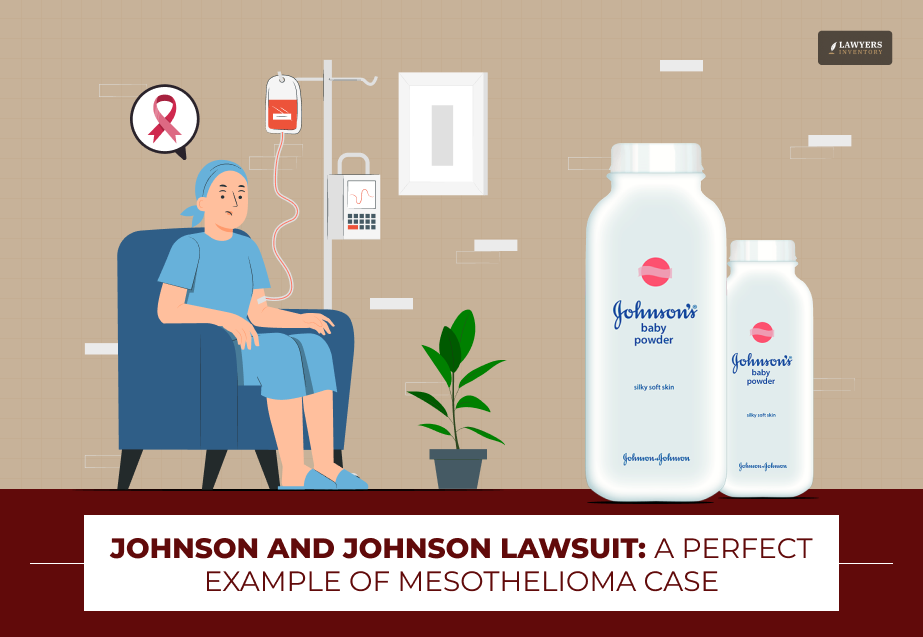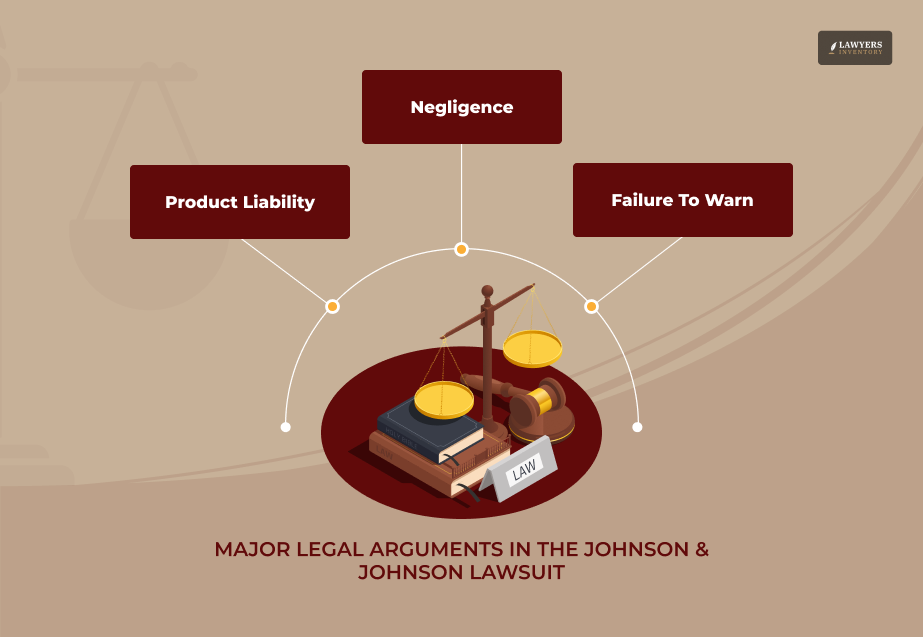
The Johnson and Johnson lawsuit has been making headlines for a while. And it’s a story that hits close to home for many. It’s a story about trust, about a product we’ve used on our babies for generations, and about the devastating possibility that we could link it to a deadly cancer: mesothelioma.
Mesothelioma, as I’ve learned covering this story, is a rare and aggressive cancer that attacks the lining of vital organs like the lungs, abdomen, and heart. It’s almost always due to the exposure to asbestos.
And here’s the crucial link: some talc deposits, the very talc used in products like Johnson & Johnson’s Baby Powder, are naturally found alongside asbestos.
The lawsuits allege that this proximity meant contamination. That tiny asbestos fibers could have ended up in the talc, posing a serious health risk to those who used it.
Think about that for a moment. A product that we thought to be pure and gentle, potentially containing a known carcinogen. It’s a chilling thought, isn’t it?
As soon as the news hit the world, it was no longer just about legal battles and corporate giants. Right now, it’s about real people, families facing unimaginable hardship, and the fundamental question of corporate responsibility.
All About the Johnson and Johnson Lawsuit
Johnson & Johnson. The name alone makes us think about images of Band-Aids, baby shampoo, and, of course, Baby Powder.
For generations, J&J products have been a fixture in our lives, trusted staples in our homes. But behind this familiar facade lies a complex story. And it has become deeply intertwined with allegations of asbestos contamination in their talc products.
Let’s rewind a bit.
With a foundation dating back to 1886, J&J built a global empire on the promise of health and well-being. And talc, specifically in products like Baby Powder and Shower to Shower, played a starring role.
Baby Powder, introduced in the late 19th century, wasn’t just a product; it was a cultural icon. Think of those classic images of rosy-cheeked babies dusted with powder. The company marketed it as pure, gentle, and essential for infant care.
But here’s where the story takes a troubling turn. We can sometimes find talc, a naturally occurring mineral, in close proximity to asbestos, a known carcinogen.
The lawsuits against J&J hinge on this very fact. There is the allegation that some of their talc products had asbestos, potentially exposing millions to this dangerous substance.
Mesothelioma Cases Specifically
When we discuss the Johnson and Johnson lawsuit and their connection to mesothelioma, it’s not just about a disease in the abstract.
It’s about real people facing a devastating diagnosis. To understand the gravity of these cases, we need to talk about the different ways mesothelioma can strike.
Mesothelioma isn’t a one-size-fits-all disease. It manifests in different forms, depending on where it develops in the body.
The most prevalent type, and the one most often at the center of the J&J talc lawsuits, is pleural mesothelioma.
This form attacks the lining of the lungs, making breathing incredibly difficult and causing severe chest pain. Imagine the simple act of taking a breath becoming a painful struggle. That’s the reality for patients with pleural mesothelioma.
Then, there’s peritoneal mesothelioma, which affects the lining of the abdomen. While less common than the pleural form, it’s equally devastating, causing abdominal pain, swelling, and weight loss.
It’s a relentless disease that takes a heavy toll. In rarer instances, mesothelioma can develop in the lining of the heart (pericardial mesothelioma) or even the testicles (testicular mesothelioma).
The statistics surrounding mesothelioma are heartbreaking. These aren’t just numbers; they represent lives cut short and families shattered.
The 5-year survival rate for pleural mesothelioma is sadly low, hovering around 12%, according to the American Cancer Society.
Peritoneal mesothelioma has a 5-year survival rate of around 65%. While it offers a slightly better prognosis, it’s still a tremendously difficult battle.
These figures underscore the severity of this disease. It also brings a stark reality to the allegations that asbestos-contaminated talc may have played a role in these diagnoses.
Scientific Evidence Linking Talc and Mesothelioma
The link between talc and mesothelioma hinges on the potential presence of asbestos, a known carcinogen, within talc deposits.
Talc and asbestos are naturally occurring minerals that can form in close proximity underground. This geological co-occurrence is the crux of the scientific argument.
Several studies have identified asbestos fibers, including tremolite and chrysotile, in talc samples. When people use these talc products, particularly in powder form, microscopic asbestos fibers can become airborne and inhaled.
Once inhaled, these fibers can lodge in the lining of the lungs or abdomen, causing chronic inflammation and cellular damage over time. Experts believe this chronic inflammation to be a key factor in the development of mesothelioma.
While not all talc contains asbestos, the presence of these fibers in some talc deposits provides the crucial scientific link between talc exposure and the development of this deadly cancer.
Key Legal Arguments in Mesothelioma Cases

The mesothelioma cases within the Johnson & Johnson talc lawsuit hinge on several key legal arguments.
Primarily, plaintiffs argue product liability, asserting that J&J’s talc products were defective due to asbestos contamination, rendering them unreasonably dangerous. This argument focuses on the company’s responsibility to ensure the safety of its products.
Another central argument is negligence, claiming that J&J knew or should have known about the potential asbestos contamination in their talc but failed to take adequate steps to prevent it or warn consumers. This highlights the company’s alleged failure to exercise reasonable care.
Finally, many cases allege failure to warn, arguing that J&J did not adequately warn consumers about the potential risks associated with using their talc products, including the risk of asbestos exposure and subsequent mesothelioma.
These legal arguments form the foundation of the plaintiffs’ claims, seeking compensation for the harm due to alleged asbestos contamination.
Recent Developments in Talc Litigation
The Johnson & Johnson talc litigation is a constantly evolving landscape, with new developments emerging regularly.
According to Reuters, “J&J has previously described its settlement offer as having a net present value of about $6.48 billion with the amount of actual cash paid over 25 years totaling $8 billion. The increased payout J&J is planning raises the latter figure above $9 billion.”
Here’s a summary of some recent key events:
- Bankruptcy Strategy: J&J has attempted to utilize a bankruptcy strategy for its subsidiary, LTL Management, to manage and resolve the talc claims. This controversial tactic of filing for Chapter 11 bankruptcy protection aimed to consolidate the lawsuits and potentially limit the overall payout. However, this strategy has faced legal challenges and scrutiny.
- Settlement Offers: J&J has proposed multi-billion dollar settlements to resolve the thousands of pending lawsuits. These settlement offers saw mixed reactions from plaintiffs, with some accepting and others continuing to pursue individual litigation.
- Ongoing Trials and Verdicts: Despite settlement efforts, individual trials continue to take place, resulting in significant verdicts against J&J in some cases. These verdicts underscore the strength of the plaintiffs’ arguments and the potential for substantial financial consequences for the company.
- Scientific and Regulatory Scrutiny: The scientific evidence linking talc to mesothelioma continues to be debated and examined by researchers and regulatory bodies. This ongoing scrutiny plays a crucial role in shaping public understanding and legal proceedings.
J&J’s Response to Talc Asbestos Lawsuits
J&J continues to openly deny that its talcum powder products cause cancer, just like many other firms that have been accused of utilizing asbestos in their goods.
However, according to documents that were not sealed in court, business leaders knew as early as the 1950s that the talcum powder included asbestos fibers.
Internal business studies emphasized the necessity of stifling worries about asbestos exposure at Italian and Vermont talc mines.
Tests carried out in the latter part of the 20th century showed that J&J talc included asbestos, which the business concealed and neglected to disclose.
At the Windsor Materials talc mine in Vermont, where some of the talc was first produced, an official suggested adding citric acid to assist in concealing the presence of chrysotile asbestos fibers.
Jurors are now holding Johnson & Johnson responsible for the illnesses and their connection to asbestos that its products caused. J&J was able to create a trust fund in August 2024 with $6.475 billion. Through this, they intended to resolve 99.75% of the asbestos talc claims it still faces in the United States.
The majority of J&J mesothelioma cases, according to the corporation, have been settled out of bankruptcy court. Talc claims involving ovarian and other gynecological cancers will be resolved under the new bankruptcy strategy.
The new bankruptcy plan will establish a trust fund that does not include mesothelioma claims, in contrast to previous plans.
An $8.9 billion trust fund to settle mesothelioma and gynecological cancer claims was part of a previously rejected plan. J&J is also the target of class action lawsuits alleging that their bankruptcy filings were false and relating to medical costs for talc injuries.
Johnson and Johnson Lawsuit Eligibility
Currently, Johnson and Johnson has reached a billion-dollar settlement and has been able to resolve the issues and claims of nearly 70,000 people who filed for the Johnson and Johnson lawsuit.
These people have claimed that after using the baby powder for years, they have developed ovarian cancer, mesothelioma, and other asbestos-related cancers.
So, this might bring you to the question: Do you qualify for this class action lawsuit against Johnson and Johnson? And do you need a class action attorney for the same?
Anyone who is suffering from asbestos-related cancer, including mesothelioma, as well as other ovarian and gynecological cancers, is eligible for this claim. Yes, you read that right!
Suppose you have used J&J baby powder as a child (most likely you have) and have cancer that might point towards the cause being asbestos. In that case, it’s a clear sign that you might have gotten it due to this baby powder. This means that you are eligible to claim your part of the settlement.
Potential Future Implications of the Johnson and Johnson Lawsuit
While it is true that Johnson and Johnson discontinued their baby powder in 2023 following lawsuits and other cases, the implications are not yet over.
While the jury was passing the verdict for several cases, there was one thing that happened that shocked a lot of people. They awarded $22 million for punitive damages to a man in a Pittsburg trial even though it did not cause him mesothelioma due to the company’s talcum product.
I personally think it was because the jury really wanted to punish the company for its negligence. Considering the fact that Johnson and Johnson had been around for more than a century, it was not acceptable for them to misrepresent the safety of its talcum products.
This brings us to one point: what about the other baby powders that might have used talc?
That’s a question many people are asking, and it’s a valid one. Firstly, this landmark case has put a massive spotlight on the potential risks of talc, especially with asbestos contamination.
Consequently, other companies producing talc-based powders are facing increased scrutiny. Secondly, we’ve already seen some manufacturers reformulating their products to use cornstarch instead of talc.
This shift suggests a growing awareness of the potential dangers and a move towards safer alternatives.
Furthermore, regulatory bodies are likely to increase their oversight of talc mining and processing to ensure stricter safety standards.
Finally, this case could set a precedent for future litigation, making it easier for individuals harmed by potentially contaminated talc products to seek justice. In short, the J&J case has the potential to reshape the entire talc industry and prioritize consumer safety.
Read Also:
- Walmart Class Action Lawsuit: The $45 Million Lawsuit That Has Shaken the Industry
- Sierra Mist Lawsuit: Did PepsiCo Really Clash with Influencer Over Identity Theft?
- ZYN Lawsuit: Consequences of Deceptive Marketing to Minors










0 Reply
No comments yet.